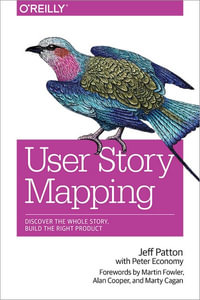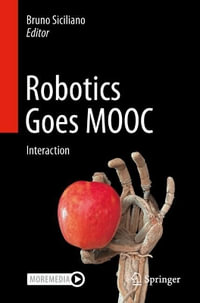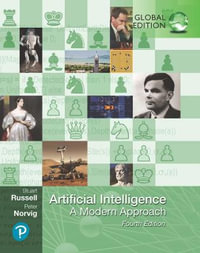| Evolutionary induction of decision trees for misclassification cost minimization | p. 1 |
| DNA Based evolutionary approach for microprocessor design automation | p. 11 |
| Multiple sequence alignment with evolutionary-progressive method | p. 23 |
| Optimal design centring through a hybrid approach based on evolutionary algorithms and Monte Carlo simulation | p. 31 |
| A new self-adaptative crossover operator for real-coded evolutionary algorithms | p. 39 |
| Wavelet enhanced analytical and evolutionary approaches to time series forecasting | p. 49 |
| Gradient based stochastic mutation operators in evolutionary multi-objective optimization | p. 58 |
| Co-evolutionary multi-agent system with predator-prey mechanism for multi-objective optimization | p. 67 |
| Optical design with epsilon-dominated multi-objective evolutionary algorithm | p. 77 |
| Boosting the performance of a multiobjective algorithm to design RBFNNs through parallelization | p. 85 |
| Immune algorithm versus differential evolution : a comparative case study using high dimensional function optimization | p. 93 |
| Self-adaptive evolutionary methods in designing skeletal structures | p. 102 |
| An evolutionary approach to task graph scheduling | p. 110 |
| Universal quantum gates via Yang-baxterization of dihedral quantum double | p. 120 |
| Evolutionary Bi-objective learning with lowest complexity in neural networks : empirical comparisons | p. 128 |
| Improving the quality of the pareto frontier approximation obtained by semi-elitist evolutionary multi-agent system using distributed and decentralized frontier crowding mechanism | p. 138 |
| On semantic properties of interestingness measures for extracting rules from data | p. 148 |
| A new mutation operator for the elitism-based compact genetic algorithm | p. 159 |
| Genetic programming for proactive aggregation protocols | p. 167 |
| Automatic synthesis for quantum circuits using genetic algorithms | p. 174 |
| Clonal selection approach with mutations based on symmetric [alpha]-stable distributions for non-stationary optimization tasks | p. 184 |
| Minimizing cycle time of the flow line - genetic approach with gene expression | p. 194 |
| Genetic-greedy hybrid approach for topological active nets optimization | p. 202 |
| On sum coloring of graphs with parallel genetic algorithms | p. 211 |
| Liquid state genetic programming | p. 220 |
| Genetic based distribution service restoration with minimum average energy not supplied | p. 230 |
| Multi-objective feature selection with NSGA II | p. 240 |
| Design of 2-D IIR filters using two error criteria with genetic algorithm | p. 248 |
| A hybrid genetic algorithm with simulated annealing for nonlinear blind equalization using RBF networks | p. 257 |
| Feature extraction of speech signal by genetic algorithms-simulated annealing and comparison with linear predictive coding based methods | p. 266 |
| Automatic design of ANNs by means of GP for data mining tasks : Iris flower classification problem | p. 276 |
| FPGA implementation of evolvable characters recognizer with self-adaptive mutation rates | p. 286 |
| A multi-gene-feature-based genetic algorithm for prediction of operon | p. 296 |
| Application of Micro-GA for an optimal direct design method of steel frame | p. 306 |
| Multi-objective optimal public investment : an extended model and genetic algorithm-based case study | p. 314 |
| Many-objective particle swarm optimization by gradual leader selection | p. 323 |
| Mixed ant colony optimization for the unit commitment problem | p. 332 |
| A shuffled complex evolution of particle swarm optimization algorithm | p. 341 |
| Wasp swarm algorithm for dynamic MAX-SAT problems | p. 350 |
| Particle swarm optimization for the multidimensional knapsack problem | p. 358 |
| Particle swarms for multimodal optimization | p. 366 |
| Quantum-behaved particle swarm optimization with binary encoding | p. 376 |
| Artificial environment for simulation of emergent behaviour | p. 386 |
| A novel and more efficient search strategy of quantum-behaved particle swarm optimization | p. 394 |
| Extracting grammars from RNA sequences | p. 404 |
| Modeling human performance in two player zero sum games using Kelly criterion | p. 414 |
| No-regret boosting | p. 422 |
| Evolutionary approach to the game of checkers | p. 432 |
| Implementation of an interactive NPC based on game ontology and game community Q/A bulletin board | p. 441 |
| Theory of saplings growing up algorithm | p. 450 |
| Improved production of competitive learning rules with an additional term for vector quantization | p. 461 |
| Reinforcement learning in fine time discretization | p. 470 |
| Agent-based approach to solving the resource constrained project scheduling problem | p. 480 |
| A model of non-elemental associative learning in the mushroom body neuropil of the insect brain | p. 488 |
| Performance-based Bayesian learning for resource collaboration optimization in manufacturing grid | p. 498 |
| A hybrid simulated-annealing algorithm for two-dimensional strip packing problem | p. 508 |
| Handling linguistic values in knowledge acquisition | p. 517 |
| An IA based approach for the optimal design of traffic-monitor systems | p. 526 |
| Finding the optimal path in 3D spaces using EDAs - the wireless sensor networks scenario | p. 536 |
| Evidential reasoning based on multisensor data fusion for target identification | p. 546 |
| A simple and compact algorithm for the RMQ and its application to the longest common repeat problem | p. 554 |
| Improved bacterial foraging algorithms and their applications to job shop scheduling problems | p. 562 |
| An evolutionary approach for approximating the solutions of systems of linear fuzzy equations | p. 570 |
| On fuzzy driven support for SD-efficient portfolio selection | p. 578 |
| Fuzzy kernel ridge regression for classification | p. 588 |
| Assessment of the accuracy of the process of ceramics grinding with the use of fuzzy interference | p. 596 |
| A dynamic resource broker and fuzzy logic based scheduling algorithm in grid environment | p. 604 |
| Improving business failure predication using rough sets with non-financial variables | p. 614 |
| Optimization of fuzzy model driven to IG and HFC-based GAs | p. 622 |
| Potential assessment of an ellipsoidal neural fuzzy time series model for freeway traffic prediction | p. 631 |
| Digital model of series resonant converter with piezoelectric ceramic transducers and fuzzy logic control | p. 640 |
| A method to classify collaboration in CSCL systems | p. 649 |
| Electromagnetic levitation system with clustering based fuzzy controller | p. 657 |
| Fuzzy relation-based PNNs with the aid of IG and symbolic gene type-based GAs | p. 666 |
| Pricing the foreign currency options with the fuzzy numbers based on the Garman-Kohlhagen model | p. 674 |
| Designing rough sets attributes reduction based video deinterlacing system | p. 684 |
| Optimization of fuzzy membership function using clonal selection | p. 694 |
| Clustering of leaf-labelled trees | p. 702 |
| Social organization of evolving multiple classifier system functioning in changing environments | p. 711 |
| Softening splits in decision trees using simulated annealing | p. 721 |
| A novel architecture for the classification and visualization of sequential data | p. 730 |
| Locally scaled density based clustering | p. 739 |
| Hierarchical rules for a hierarchical classifier | p. 749 |
| A demonstration of clustering in protein contact maps for alpha helix pairs | p. 758 |
| Dynamic data probes | p. 767 |
| Classifying chemical compounds using contrast and common patterns | p. 772 |
| Power transients characterization and classification using higher-order cumulants and competitive layers | p. 782 |
| Mutual information estimation in higher dimensions : a speed-up of a k-nearest neighbor based estimator | p. 790 |
| Grammar-based classifier system for recognition of promoter regions | p. 798 |
| Learning Bayesian classifiers from dependency network classifiers | p. 806 |
| Determining the dependency among clauses based on machine learning techniques | p. 814 |
| Using real-valued meta classifiers to integrate and contextualize binding site predictions | p. 822 |
| Effectiveness of feature space selection on credit engineering on multi-group classification cases | p. 830 |
| Constructing stereotypes for an adaptive e-Shop using AIN-based clustering | p. 837 |
| Table of Contents provided by Blackwell. All Rights Reserved. |
























